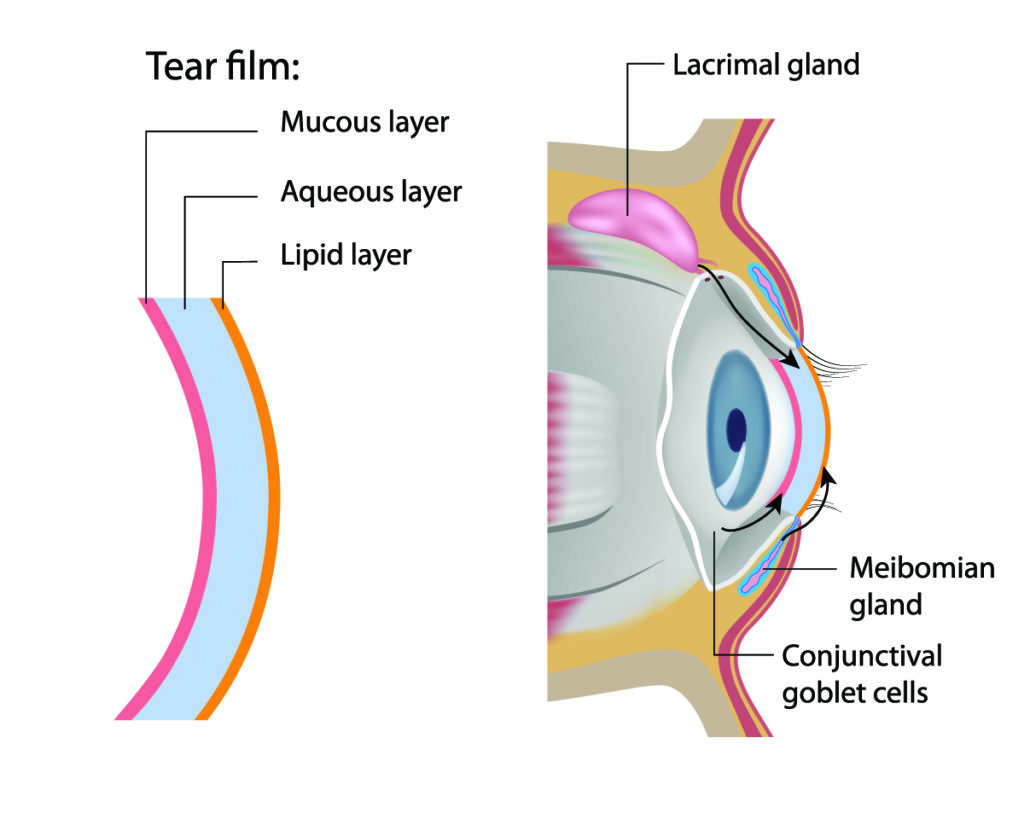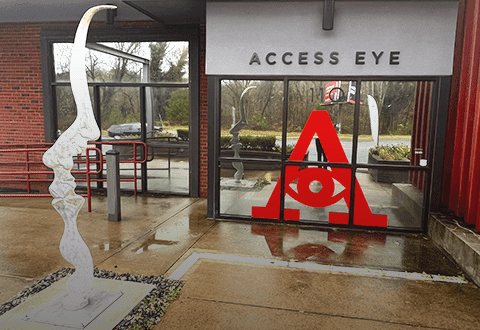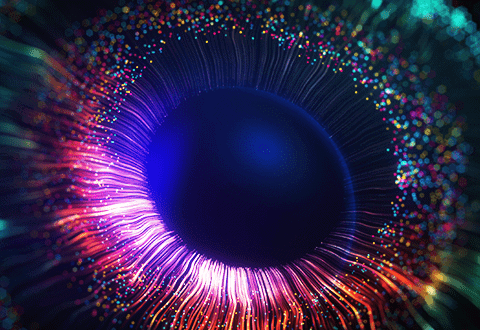You Don’t Have to Suffer Through Scratchy Dry Eyes: OptiLight Can Help

An estimated 16.7 to 50.2 million Americans struggle with dry eye symptoms that affect their daily activities and quality of life. Most of these dry eye cases are caused by meibomian gland dysfunction (MGD), in which the eyelid glands stop secreting enough oil and cause rapid tear evaporation. Untreated, dry eyes can cause severe damage due to the friction of the eyelids and lack of protection against debris and bacteria. OptiLight is a light-based treatment for meibomian gland dysfunction proven to reduce symptoms and restore a healthy tear film.
What Are Your Tears Made Of?
Your tear film contains three layers. The lacrimal glands above the outer edges of your eyes form watery tears that make up the aqueous layer of tears, providing wetness. The meibomian glands are responsible for the oily layer and secrete meibum to prevent aqueous tears from evaporating too quickly. Conjunctival goblet cells created by the thin mucous membrane (conjunctiva) coating the front of the eye make the mucous or mucin layer of the tear film that helps the tears stick to the cornea.
When these layers are off balance, you can experience stinging, burning, gritty sensations, light sensitivity, eye fatigue, scratchy eyes, and other dry eye symptoms. MGD is the cause of 86% of dry eyes because blockages in the meibomian glands prevent oil secretions, leading to evaporative dry eye disease.
OptiLight Treatment for Meibomian Gland Dysfunction
OptiLight is a technology created by Lumenis, and it is the first and only intense pulsed light (IPL) treatment FDA-approved for dry eye treatment. The non-invasive procedure is safe and effective in decreasing or eliminating dry eye symptoms caused by MGD. OptiLight targets the major sources of eyelid inflammation that lead to dry eye disease and meibomian gland blockages, including Demodex might, abnormal blood vessels, and pro-inflammatory agents. The technology restores gland function and tear film homeostasis.
Dry eye treatment with OptiLight takes 10 to 15 minutes. It involves sending light pulses under the eyes to increase tear breakup time and reduce bacteria around the eyes, as well as Demodex mites. These mites live in hair follicles and oil glands and are usually harmless, but an infestation causes Demodex blepharitis or eyelid swelling and affects the meibomian glands. OptiLight targets these issues with precise light energy, and the treatment is typically followed by gland expression or pressure to clear away dry or crusty oil stuck in the way.
OptiLight requires at least four sessions two to four weeks apart. Your eyes are covered with a protective shield, and a coupling gel is applied to the treated skin. OptiLight treatment may feel warm with little to no discomfort. You can resume your daily routine immediately, and women can re-apply makeup right after their appointment. Most patients report improved dry eye symptoms after the second or third OptiLight treatment.
Living with dry eye disease can prevent you from enjoying certain environments and activities. OptiLight can relieve your dry eye symptoms so you can get back to enjoying your life.
Schedule a dry eye consultation at one of our five locations throughout Virginia. You can book your appointment at Access Eye online or call (540) 371-2020. We serve patients in King George, Falmouth, Plank Road, Parkway, Aquia, and Fredericksburg.
















